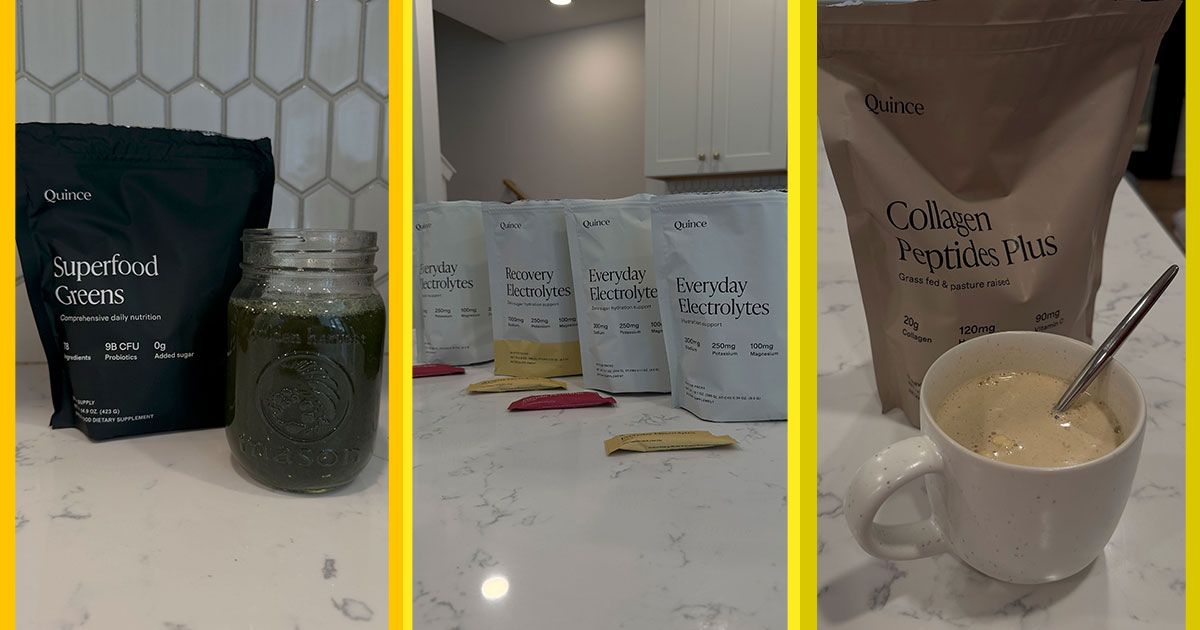In the past year, I have closely followed Quince’s growth as a retailer. After reporting on their work bags in June and testing 15 different sundresses in July, I delved into their clothing range, evaluating items such as cashmere sweaters, trench coats, and fanny packs. My exploration revealed that Quince’s product categories are impressively diverse—a fact highlighted by their recent venture into wellness and supplements. Now offering an array of products including electrolyte packets, plant-based protein powder, grass-fed collagen, and daily greens powder, I was eager to assess how these new items compared to my usual supplements and fit into my daily regimen.
While initially skeptical, I discovered some products that might earn a permanent spot in my pantry, along with others I will likely avoid in the future. It’s worth mentioning that many supplements are currently available, but due to high demand, certain items sell out quickly, and I missed the chance to test a few popular formulas like the certified organic mushroom coffee and magnesium glycinate, which were out of stock on Quince’s website.
One standout product is the plant-based protein powder, which I thoroughly enjoyed. I mixed the vanilla flavor with water and ice in my shaker, and it dissolved effortlessly, boasting a notably smooth taste without any chalkiness. Sweetened solely with monk-fruit extract, this protein powder contains no added sugar, stevia, or sugar alcohols. Each serving provides 21 grams of protein sourced from a blend of organic pea, brown rice, chia seeds, and pumpkin. This unique combination makes it an inclusive option for those with nut allergies, setting it apart from similar products like Orgain Simple’s protein powder. At $1.34 per serving, it is competitively priced compared to Orgain’s $2.14 per serving.
Quince’s collagen peptides also piqued my interest. Much like the popular Vital Proteins Collagen Peptides, which has gained celebrity endorsements, Quince offers 20 grams of grass-fed pasture-raised collagen peptides per serving. Additionally, it includes 120 mg of hyaluronic acid and 90 mg of vitamin C. The unflavored nature of Quince’s Collagen Peptides Plus allowed it to blend seamlessly into my morning coffee, dissolving easily in hot liquids but requiring a bit more mixing in cold drinks. Priced at $30 for 30 servings, this is an economical choice at $1 per serving, especially compared to similar products which may cost up to $1.79.
Moving on to the Daily Superfood Greens, I had high expectations, given my previous experience with AG1, which I have used intermittently over the years. My boyfriend, a regular AG1 user, keeps us stocked with the product. While AG1 is NSF-certified—providing assurance against contaminants—Quince’s Superfood Greens, though not certified, claim rigorous third-party testing for safety. This may suffice for casual users, but could raise concerns for professional athletes subject to stringent supplement regulations.
Upon examining the ingredients, I noted similarities between Quince’s Superfood Greens and AG1, both of which incorporate dairy-free probiotic blends and vitamin D3. However, AG1 delivers vitamin D3 via a dropper, which some might find cumbersome in a rushed morning—making Quince’s integrated powder approach more convenient. The flavor, however, was an issue for me; the earthy taste did not provide an enjoyable experience, an important attribute I look for in supplements.
Despite not offering a subscription model like AG1 and Huel, Quince is significantly cheaper, with servings priced at $1.34 compared to AG1’s $3.30 and Huel’s $1.88.
Among the products I tried, my top pick was the Everyday Hydration electrolyte formula. I found it superior to DripDrop Hydration, as it contained less sugar (5 grams versus 7 grams) and carbohydrates (5 grams versus 9 grams), while still providing 300 milligrams of sodium along with 250 milligrams of potassium, 100 milligrams of magnesium, and 2 milligrams of zinc per serving—essential for hydration and cellular function. The citrus and raspberry flavors were pleasantly mild, allowing flexibility in mixing them with different amounts of water.
Conversely, I was surprised by the Recovery Zero Sugar Hydration option, which lacked carbohydrates per serving—a common inclusion in recovery drinks meant to replenish glycogen stores. While it is not as comprehensive as other post-workout supplements, it may be better suited for everyday use, such as after a long day of travel or during illness. The significant difference lies in sodium content, with Recovery featuring 1,000 milligrams compared to Everyday Hydration’s 300 milligrams.
All three formulas—Everyday Hydration, Everyday Zero Sugar Hydration, and Recovery Zero Sugar Hydration—incorporate Reb M, a no-calorie sweetener derived from the stevia plant. Notably, the Everyday Hydration blend also includes real cane sugar. The product labels assert they are free from stevia or sugar alcohols, although the utilization of Reb M could be perceived as just another type of sugar substitute.
Overall, my journey testing Quince’s supplements offers exciting prospects for those seeking affordable and varied nutritional support.






